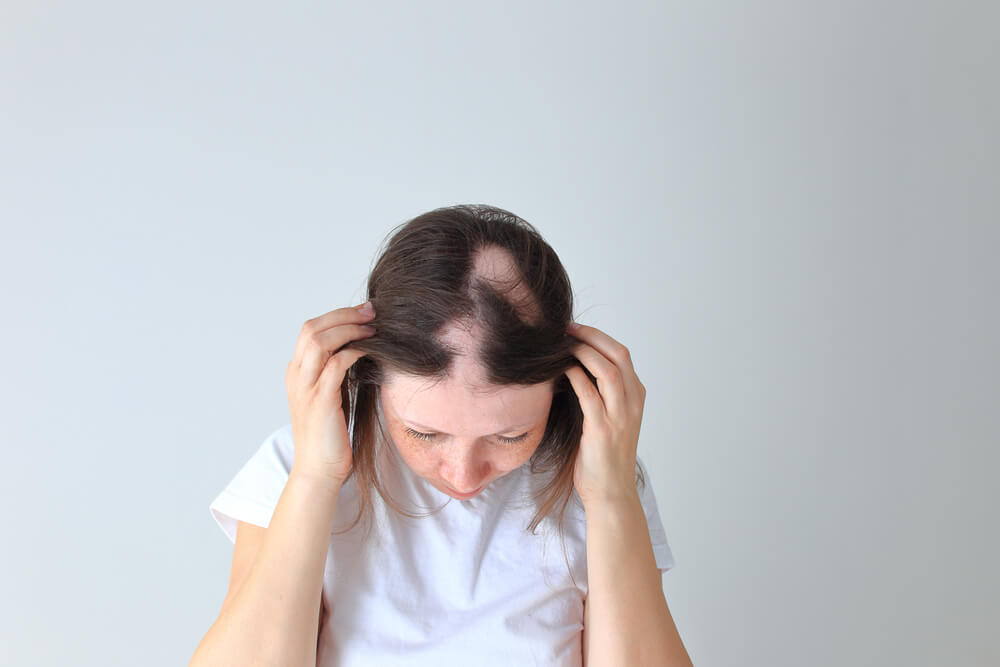Christoffels is open and taking appropriate actions to ensure customer and staff safety
Christoffels is open and taking appropriate actions to ensure customer and staff safety

Scarring alopecia is a hair condition that affects a significant number of people around the world. It is a type of hair loss that occurs when the hair follicles are destroyed and replaced by scar tissues.
This condition can be challenging to diagnose, and it is vital to seek professional help if you suspect you have it. In this article, we will explore the causes, symptoms, and treatment options of scarring alopecia.
Scarring alopecia is a condition that affects the hair follicles, leading to permanent hair loss. It is also known as cicatricial alopecia, and it occurs when inflammation destroys the hair follicles, leading to scarring. The hair follicles are replaced by scar tissues, which make it difficult for hair to regrow. Scarring alopecia affects both men and women of all ages, and it can lead to significant hair loss.
The causes of scarring alopecia are not fully understood. However, it is believed that the condition is caused by an autoimmune disorder, which causes the body’s immune system to attack hair follicles. Other possible causes of scarring alopecia include bacterial and fungal infections, trauma, and genetic predisposition. Some medications and medical treatments, such as chemotherapy, can also cause scarring alopecia.
Scarring alopecia can present itself in different ways, depending on the type of alopecia. The most common sign of scarring alopecia is patchy hair loss, which can occur on any part of the scalp. Other symptoms of scarring alopecia include itching, burning, and pain in the affected area. The scalp may also appear red, swollen, or have pustules. In some cases, scarring alopecia can affect other areas of the body, such as the beard or eyebrows.
There are several types of scarring alopecia, and each type presents different characteristics. The most common types of scarring alopecia include:
Lichen Planopilaris: A type of scarring alopecia that affects the hair follicles on the scalp. It causes small, flat-topped bumps on the scalp that can be red, itchy, or painful. As the condition progresses, the bumps can turn into raised, scaly patches that lead to hair loss.
Frontal Fibrosing Alopecia: A type of scarring alopecia that affects the hairline, eyebrows, and eyelashes. It causes the hairline to recede, and the eyebrows and eyelashes to fall out. This condition is more common in women, and it can cause significant emotional distress.
Central Centrifugal Cicatricial Alopecia: A type of scarring alopecia that affects the central part of the scalp. It can cause patchy hair loss and scarring, and it is more common in women of African descent.
Diagnosing scarring alopecia can be challenging, and it requires a thorough examination by a hair loss professional. The professional will examine your scalp and take a medical history to determine the cause of your hair loss. In some cases, a scalp biopsy may be necessary to confirm the diagnosis. The biopsy involves taking a small sample of the affected scalp tissue and examining it under a microscope.
Unfortunately, there is no cure for scarring alopecia. However, there are treatment options available that can help slow down the progression of the condition and alleviate the symptoms. The treatment options for scarring alopecia include:
Topical and Oral Medications: Can be used to reduce inflammation and slow down the progression of scarring alopecia. These medications include corticosteroids, antibiotics, and immunosuppressants.
Non-Surgical Hair Replacement: Can be used alleviate the appearance of hair loss caused by scarring alopecia. Hair replacement for both men and women is effective for both men and women, allowing clients to lead a normal, healthy life, both socially and professionally, while maintaining the appearance of healthy hair and scalp. This option can also have a positive effect for the individual who suffers from scarring alopecia in that by allowing them to have healthy hair again, they are able to restore their self-confidence and lead a normal life once more.
Wigs and Hairpieces: Can also be used to cover up the hair losscaused by scarring alopecia. Wigs and toppers can be customized to match your natural hair color and texture.
Lifestyle Changes and Home Remedies for Scarring Alopecia: In addition to medical treatments, lifestyle changes and home remedies can also help alleviate the symptoms of scarring alopecia. These changes include:
Scarring alopecia can have a significant impact on a person’s emotional and mental well-being. It can cause feelings of anxiety, depression, and low self-esteem. It is essential to seek support from friends, family, or a mental health professional to help cope with the emotional and mental effects of scarring alopecia. Although scarring alopecia cannot be prevented, there are steps that you can take to promote hair health and reduce the risk of hair loss, including avoiding harsh chemical treatments and maintaining a healthy lifestyle that includes regular exercise, a healthy diet, and stress reduction can help promote hair growth and prevent hair loss.
Scarring alopecia is a challenging condition that can lead to significant hair loss. It is essential to seek professional help if you suspect you may have scarring alopecia. There are treatment options available that can help slow down the progression of the condition and alleviate the symptoms. For additional information, contact your primary care physician or dermatologist.
If you are experiencing the devastating effects of hair loss and would like to learn more about non-surgical hair replacement options available to you, we invite you to consider scheduling a free private, confidential consultation with our team ofexperienced hair loss professionals. Get started by clicking here.

It’s time to feel good about your hair again.
3300 East 26th Street | Sioux Falls, SD 57103